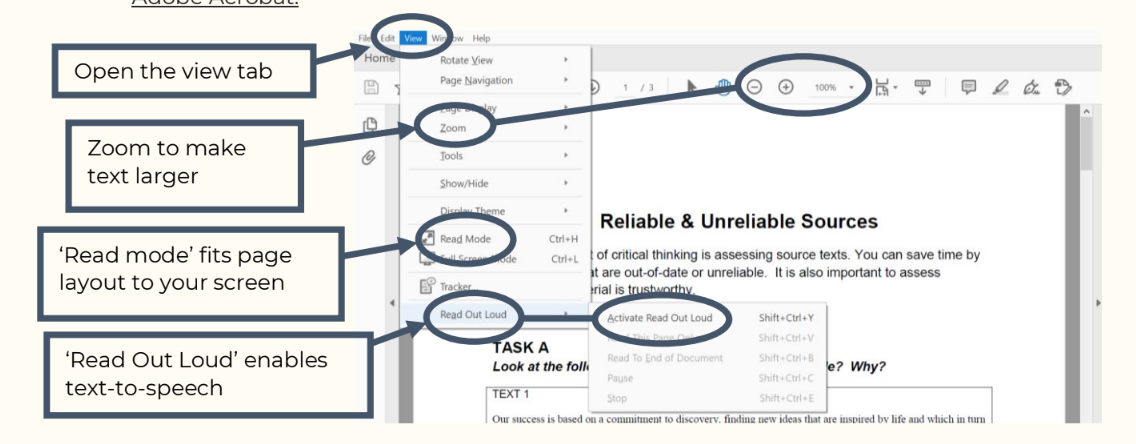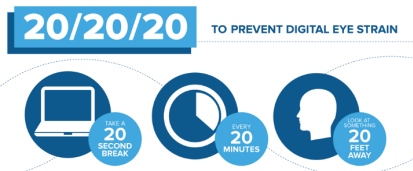
It is important to give the eyes a rest. Optometrists recommend the 20/20/20 technique:

(Chou, 2018)
There is a huge range of resources to help with reading online, such as audio note takers, text-to-speech apps, and browser plugins which improve readability. For some useful examples, try https://diversityandability.com/resources.
You may also be surprised by the amount of features that already exist in programmes you use every day. For details on exploring these features on all of your devices, try https://mcmw.abilitynet.org.uk/impairment/vision.
Chou, B. (2018) Deconstructing the 20-20-20 Rule for Digital Eye Strain. Available at: https://www.optometrytimes.com/view/deconstructing-20-20-20-rule-digital-eye-strain (Accessed 4 August 2020).
Open University (2020) Techniques for Reading Online Material. Available at: https://help.open.ac.uk/techniques-for-reading-online-material (Accessed 3 August 2020).
Rello, L. and Bigham, J. P. (2017) Good Background Colors for Readers: A Study of People with and without Dyslexia. Available at:
https://www.cs.cmu.edu/~jbigham/pubs/pdfs/2017/colors.pdf (Accessed 4 August 2020).
